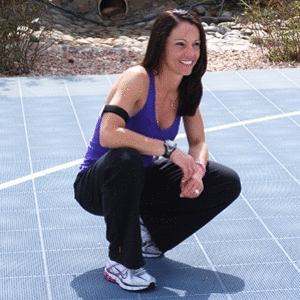Foam rolling (also known as self-myofascial release) is a form of self massage to help relax tight muscles. There are many tools to perform self-myofascial release, but if you’re using a foam roller, it will be important to only target dense areas of muscle tissue such as the calves, hamstrings, quadriceps, and gluteals. Areas to avoid with the foam roller include the abdomen, low-back, chest (for women) and the neck.
Moreover, foam rolling is not for everyone. Individuals with rheumatoid arthritis, advanced diabetes (peripheral neuropathy), phlebitis (infection of superficial veins), osteoporosis, cellulitis (infection of soft tissue), goiter (enlarged thyroid), eczema, or open wounds should avoid foam rolling. In addition, individuals who have a hard time getting up and down from the floor should not perform self-myofascial release with a foam roller and should stick with static stretching from a seated or standing position.
You only want to roll on areas of the body that are pretty dense with muscle tissue. Therefore, areas to avoid with the foam roller include the lower back, abdomen, and neck. Females may chose to avoid foam rolling the chest to avoid any potential discomfort of compressing the breast tissue. In addition, individuals that are pregnant or have medical condition(s) will have additional restrictions. You should also avoid any areas of the body that have open wounds, skin lesions (such as eczema), infection, blod clots, or joints with severe rheumatoid arthritis.
Continue Learning about Exercise Equipment
Important: This content reflects information from various individuals and organizations and may offer alternative or opposing points of view. It should not be used for medical advice, diagnosis or treatment. As always, you should consult with your healthcare provider about your specific health needs.


